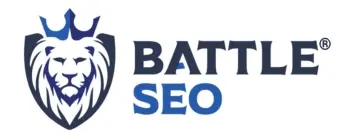Are you looking to optimize your website for search engines but need help figuring out where to start? Technical SEO is a critical aspect that many website owners overlook. Understanding and implementing its importance can significantly improve your website’s rankings and visibility to potential customers. In this article, we will provide an overview of technical SEO, its significance in online marketing, and essential tips to avoid common mistakes.
Overview of Technical SEO
Technical SEO involves optimizing a website’s technical aspects to enhance its organic visibility in search engine results. This includes tasks like improving page speed, ensuring mobile-friendliness, and optimizing content structure. By addressing these elements, you can ensure that search engines effectively crawl and index the pages you want and ignore the pages you do not want in search results.
Understanding Technical SEO Fundamentals
To grasp the fundamentals, it’s important to know that technical SEO focuses on optimizing a website’s structure, coding language, and indexing. This ensures that search engines can adequately interpret and rank your website’s content. Optimizing page loading speed and mobile-friendliness are crucial factors in achieving higher rankings.
Impact of Technical SEO on Rankings
Technical SEO significantly impacts a website’s rankings in search engine results. By optimizing your site for search engine crawlers, you increase the chances of your content being correctly indexed and ranked. Technical SEO also encompasses factors like page speed and mobile-friendliness, directly affecting a site’s search results performance.
Technical SEO for E-commerce Stores
Technical SEO is vital for optimizing e-commerce stores. Ensuring proper website structure, page speed, internal linking, meta tags, and URL structures is essential for search engine visibility. A well-structured sitemap guides search engine crawlers and improves overall visibility.
Significance of Technical SEO
Technical SEO is essential for search engine bots to crawl and index a website efficiently. By optimizing page speed, fixing broken links, and ensuring proper functionality, your site’s rankings, and overall performance will improve. It also enhances user experience, leading to higher engagement and customer satisfaction.
Benefits of Schema Markup
Schema markup, a type of code, helps search engines understand and present your content more effectively. It can increase click-through rates in search results, improve search engine rankings, and provide valuable information for voice searches. Utilizing schema markup is an effective way to enhance your SEO efforts and reach a wider audience.
Advantages of Rich Snippets
Rich snippets, or structured data, offer numerous benefits for SEO. They enhance visibility in search results by providing additional information, attracting more clicks, and differentiating your content from competitors. Rich snippets also offer more control over how your content is presented in search engine results, maximizing your online visibility.
Technical SEO for Local Businesses
Technical SEO is crucial for local businesses to improve visibility and reach more customers. Optimizing website structure, page speed, internal linking, and utilizing relevant keywords enhances local search engine rankings. Technical SEO ensures that potential customers can easily find your business online.
Structuring Content for Technical SEO
Structuring content is very effective and vital for technical SEO. It involves using relevant keywords, organizing content with headings and subheadings, and utilizing internal linking. By optimizing content structure, your website becomes user-friendly and easier for bots to crawl and search engines to index.
Optimizing Images for Technical SEO
Optimizing images is crucial for technical SEO. Correctly naming files and providing alt text helps search engines understand and index images. Compressing images without compromising quality improves page loading speed, leading to better search engine rankings.
Creating an XML Sitemap
An XML sitemap is essential for technical SEO as it guides search engines in efficiently crawling and indexing your website. Keeping the sitemap updated ensures that new content is indexed promptly and helps users find relevant information more easily.
Diverting traffic with 301 Redirects
301 redirects are crucial for diverting traffic when making changes to your website or URLs. They preserve your page rankings, prevent visitors from landing on error pages, and assist search engines in updating their indexing. Properly implementing 301 redirects ensures a seamless user experience.
Utilizing Canonical URLs
Canonical URLs play a vital role in technical SEO. They help search engine crawlers identify the most relevant version of your content and avoid duplicate content penalties. Canonical URLs consolidate link equity and improve search engine rankings.
Validating HTML and CSS
Validating HTML and CSS is essential for technical SEO. It ensures search engine bots can read and understand your website’s content accurately. Valid code also enhances page loading speed and displays properly across different devices.
Technical SEO is critical to optimizing your website for search engines and improving visibility. By focusing on website structure, page speed, mobile-friendliness, and other technical aspects, you can enhance your rankings, attract more visitors, and provide an excellent user experience. Implementing technical SEO correctly is critical to a successful online presence.


